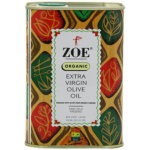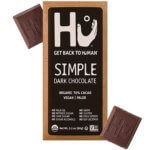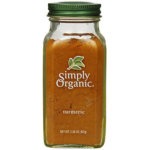In the first part of our guide to inflammation, we broke down that age old question of “so…what is chronic inflammation, exactly?” Now it’s time to explore how diet contributes to — or prevents — chronic inflammation. Read on to learn which anti-inflammatory foods to avoid, the best anti-inflammatory diet (including some powerful anti-inflammatory spices) and more.
What Is An Anti-Inflammatory Diet?
Inflammation, if you need a quick refresher, is your body’s natural response against harm. In many cases, this can be a good thing (like, if there’s actual harm). But in a lot of cases, the inflammation response gets triggered unnecessarily, leading to an inflammation response when there’s nothing to fight off. This, in turn, causes all sorts of health problems, from short-term irritations like fatigue and skin irritation to serious conditions like arthritis, diabetes, and cancer.
One of the things that can set off your body’s inflammatory system is diet. So an anti-inflammatory diet is, as the name suggests, a diet that avoids those inflammation-causing foods, while also including foods that can dampen inflammation.
To understand how diet is connected to inflammation, you need to learn about something called free radicals. As totally tubular as they might sound, they can actually be kind of dangerous. Free radicals are atoms, molecules, or ions with an unpaired valence electron — if you reach back to high school chemistry, you may remember that electrons travel around atoms and molecules in pairs, which helps keep them stabilized, and so a single one is highly volatile and chemically reactive.
Free radicals aren’t always bad. In fact, some of our bodily processes, like metabolism, produce free radicals naturally, and we can handle them without any negative consequences. But other factors, such as stress, smoking, and poor diet, can increase free radicals, and too many free radicals lead to cell damage, and — you guessed it — inflammation.
Here’s where diet comes in: one of the best ways to reduce free radicals is through antioxidants, because dietary antioxidants can actually remove free radicals from the body! Pretty cool, huh? Other foods, like things that are repeatedly heated in cooking oil, can trigger formation of free radicals.
So on a high level, an anti-inflammatory diet is one that reduces the free radicals in your body through antioxidants. But there are also a handful of other principles that inform the best anti-inflammatory diet choices. Let’s take a look.
Basic Guidelines of the Best Anti-Inflammatory Diet
So the best anti-inflammatory diet should focus on foods packed full of antioxidants, which means lots of fresh fruits and vegetables. A good rule of thumb is to aim for a colorful plate full of deep and vibrant fruits and vegetables, since this array of colors means you’re getting a wide range of antioxidants and other nutrients (plus, it’s highly Instagrammable, if you’re into that kind of thing).
You’ll also want to make sure to include healthy fats, like omega-3 fatty acids (which you can find in wild fatty fish like mackerel, herring, and salmon, as well as flax and chia seeds), which can help reduce the levels of inflammation, as can fiber (oatmeal, cruciferous veggies like broccoli and Brussels sprouts, and legumes are great sources of fiber).
No matter what specific foods you’re choosing, if you want to eat the best anti-inflammatory diet, you’ll need to go organic whenever possible — that means organic fruits, vegetables, healthy fats, nuts, spices, and certain wild fish. Why? Because when you eat conventionally grown foods, you’re also ingesting toxins (including pesticides) added to them in the production process, or from environmental pollution. Many of these toxins cause an invader-fighting response from your white blood cells, which contributes to inflammation.
In general, fresh, single-ingredient foods are the best, and if you’re eating something with multiple ingredients, make sure you recognize all of them. Processing can change the nutritional content of food and create inflammatory compounds. While you’re scanning nutrition labels, also check out the fat and sugar content. You’ll want to avoid added sugar and certain types of fat (while monounsaturated fat is actually anti-inflammatory, saturated and trans fats can cause inflammation).
A few of the most popular diets out there — including the Mediterranean and DASH diet — already adhere to a lot of these anti-inflammatory principles. But if you’re looking to create your own personal approach to the best anti-inflammatory diet, it’s simple. Read on to learn exactly what you should and shouldn’t be putting on your plate.
The 13 Most Anti-Inflammatory Foods
We now know that the best anti-inflammatory diet includes organic, unprocessed foods packed with antioxidants, healthy fats, and fiber. But what does that look like, specifically?
We’ve got you. While there are plenty of anti-inflammatory foods out there (really, the colorful produce tip above should be your new mantra at the grocery store), we’ve rounded up the 14 most powerful ones:
- Avocados: Avocados are chock-full of healthy monounsaturated fat, which helps to lessen your body’s inflammatory response. A 2013 study even found that avocados’ anti-inflammatory effect is so strong that it neutralizes other unhealthy food choices (ie, if you eat a burger with avocado, you’ll have less inflammation than if you ate the burger alone).
- Berries: Fruits like strawberries, blueberries, raspberries, and blackberries contain anthocyanins, a type of antioxidant that has an anti-inflammatory effect and can reduce disease risk (plus, they’re delicious).
- Broccoli: Cruciferous veggies like broccoli have been shown to reduce risk of heart disease and cancer, likely because of their antioxidant content. Broccoli specifically contains an antioxidant called sulforaphane, which reduces your levels of cytokines (proteins that tell your inflammatory response to leap into action). Other cruciferous vegetables include cauliflower, kale, and Brussels sprouts.
- Dark Chocolate and Cocoa: Who knew antioxidants could taste so indulgent?? Dark chocolate and cocoa owe their anti-inflammatory properties to their high content of flavonols, a type of flavonoid with antioxidant properties. Just remember that not all chocolate is anti-inflammatory (in fact, some types of chocolate are actually inflammatory foods to avoid because of their high sugar content). In order to get the benefits, make sure you choose dark chocolate that is at least 70% cocoa.
- Extra Virgin Olive Oil: Like avocados, EVOO contains healthy fats that can dampen the inflammatory response. One study found that people who consumed 1.7 ounces of olive oil daily saw their inflammatory markers go down significantly, while other research has drawn comparisons between oleocanthal (an antioxidant in olive oil) and anti-inflammatory drugs. Just make sure you choose extra virgin and not refined olive oil!
- Fatty fish like (wild!) salmon, mackerel, and sardines: These types of fish are great sources of the long-chain omega-3 fatty acids EPA and DHA, which reduce inflammation that can lead to a number of diseases, including heart disease and diabetes.
- Grapes: Like berries, grapes contain the antioxidant anthocyanins, and they also contain resveratrol, a powerful compound with anti-inflammatory effects.
- Green Tea: Not only is green tea a great alternative to coffee (which can be inflammatory for certain people), but it also contains a substance called epigallocatechin-3-gallate (EGCG), which reduces inflammation by inhibiting cytokine production.
- Mushrooms: Mushrooms contain antioxidants that protect against inflammation, but studies have shown that cooking mushrooms significantly lessens their anti-inflammatory effect, so try to eat them raw or only lightly cooked!
- Onions: Onions contain a flavonoid called quercetin, which inhibits inflammation-causing compounds. For the most anti-inflammatory properties, choose red or yellow onions over white.
- Peppers: Bell peppers, like onions, also contain quercetin, while chili peppers are a powerful source of sinapic and ferulic acid, both of which reduce inflammation. (Note that there’s a lot of discourse about the nightshade family, of which bell peppers are a part, being inflammatory. This is because nightshades contain a chemical compound called alkaloids, which can be inflammatory in high doses. However, most nightshades you buy at the store don’t have enough alkaloids to cause inflammation. Claims that nightshades are inflammatory are mostly anecdotal and unsupported by evidence. )
- Walnuts: Another great source of omega-3s and healthy fats, walnuts have been shown to reduce levels of two blood markers associated with inflammation.
- Watermelon: Watermelon gets its bright pink color from lycopene, which also happens to inhibit inflammatory processes and neutralize free radicals. This classic summer fruit also contains choline, a nutrient that can bring down chronic inflammation.
Fortunately for us, all 13 of these foods are easy to find and pretty darn tasty. By incorporating them into your diet regularly, you can feel confident that you’re eating the best anti-inflammatory diet — without having to follow a specific diet! One smart tip is to just always keep all 13 of these foods on your grocery list, and just check your stock of each before you head to the store, and rotate them by eating those that are in-season in your area like watermelon in the summer for example.
What About Anti-inflammatory Spices?
When it comes to creating the best anti-inflammatory diet, food isn’t the only thing to consider — you can also tap into an array of flavorful and exciting anti-inflammatory spices. The great thing about anti-inflammatory spices is that you can use them no matter what’s in season or what you happen to have in your fridge.
Regardless of what you’re eating, you can almost always put in a dash or two of one of these powerful anti-inflammatory spices:
- Turmeric: We already know that turmeric can help your immune system, but it also contains a compound called curcumin, which has been shown to reduce inflammation.
- Cinnamon: Studies have shown that cinnamon has anti-inflammatory properties. A great way to get a daily dose of cinnamon is to sprinkle some in your coffee instead of sugar!
- Garlic: Garlic has properties that can ease inflammation associated with arthritis (as well as inflammation generally). You can buy garlic powder and sprinkle it like a spice on top of food.
- Black pepper: Not only does black pepper have antibacterial properties, it’s also packed with inflammation-fighting antioxidants.
- Cayenne pepper: Capsaicinoids, the compounds that make chili peppers like cayenne spicy, are known for their anti-inflammatory properties.
- Ginger: Another major immune-booster, ginger has also been found to reduce and prevent inflammation. You can chop up ginger and put it into a dish or drink ginger tea — both great ways to enjoy it!
Next time you’re cooking or snacking at home, think about whether you could add a dash or two of one of these anti-inflammatory spices. It’s an easy way to get a little kick of flavor and a big boost of health benefits.
Inflammatory Foods to Avoid
So now that we’ve looked at the foods included in the best anti-inflammatory diet, it’s time to look at the flipside: inflammatory foods to avoid. As we mentioned above, things like sugar, processed foods, and certain types of fat can trigger or worsen inflammation, but there are other culprits as well.
The worst offenders when it comes to foods that cause inflammation are:
- Processed foods
- Foods with added sugar or salt
- Refined carbs (think white flour, table sugar, high-fructose corn syrup)
- Excess alcohol
- Fried foods
- Margarine
- Red meat
- Soda and other high-sugar beverages
What’s more, any food that contains excess sugar is a big culprit for triggering inflammation. This is because when blood sugar spikes, so do free radicals. Think of free radicals as a single drunk guy in a bar looking for a late-night hookup: they trigger your body’s defense system in the same way — which, you guessed it, triggers inflammation.
While the foods above are inflammatory foods to avoid at basically all costs, the ones below have a bit more wiggle room. They have been shown to cause inflammation for some people in some cases, so we try to eat them sparingly, if at all:
- Artificial sweeteners
- Dairy
- Foods packed in BPA-lined cans
- Gluten (this one is pretty person-specific, but many people experience an inflammatory reaction when they eat gluten. If you think you might have a sensitivity, try eliminating it for a few weeks and notice how you feel).
- Seed or vegetable oils (i.e., oils with high levels of trans or saturated fat, such as sunflower, vegetable, and canola oil)
But the fact is that in today’s world, we’re all going to eat those foods from time to time. Dairy and gluten are everywhere, artificial sweeteners and added sugars creep up in the strangest of places, and seed oils are cheap, so most restaurants will use them, which makes it hard to completely avoid them. Still, we’re doing our best to steer clear.
Other Ways to Prevent Inflammation
One way to keep inflammation in check is to keep your gut healthy. Eating foods that naturally contain good bacteria (aka probiotics) help prevent an overgrowth of bad bacteria. An overgrowth can cause damage to the gut lining, allowing undigested (read: rotting) food and dangerous bacteria to pass through that lining into the bloodstream. Cue a total freak-out from invader-fighting white blood cells throughout your whole body — in other words, inflammation every. where.
Worried you might have chronic inflammation? You can get a simple blood test, called the hs-CRP test. Ask your doctor for it (or find one who can give it to you), and remember to do your own research and come prepared.
At WellBe, we always try to choose anti-inflammatory foods, support our gut health for when we inevitably slip up, and have used thermography exams to screen for inflammation and disease.
The WellBe Takeaway on Eating to Reduce Inflammation
Chronic inflammation is no fun in the short-term, and can lead to serious problems in the long-term. Thankfully, with some knowledge about the relationship between inflammation and diet, you can help reduce and prevent inflammation through your food choices. Just remember:
- Free radicals trigger inflammation in our body. While certain foods create more free radicals, foods with antioxidants can decrease free radicals.
- Along with antioxidant-packed fruits and vegetables, the best anti-inflammatory diet plan also includes healthy fats, organic foods, and simple, unprocessed foods.
- The 13 most anti-inflammatory foods are: avocado, berries, broccoli, dark chocolate, extra virgin olive oil, fatty fish, grapes, green tea, mushrooms, onion, pepper, walnuts, and watermelon.
- Anti-inflammatory spices — which include turmeric, cinnamon, ginger, garlic, cayenne pepper, and black pepper — can also reduce inflammation.
- When it comes to inflammatory foods to avoid, the main things to stay away from are sugar and processed foods. Seed oils, fried foods, margarine, and excess alcohol can also cause inflammation.
What’s your favorite way to incorporate anti-inflammatory foods into your diet? Tell us in the comments below!
Citations:
- Perumalla Venkata, R, et al. “Evaluation of the deleterious health effects of consumption of repeatedly heated vegetable oil.” Toxicology reports vol. 3 636-643. 16 Aug. 2016.
- Li Z, et al. Hass avocado modulates postprandial vascular reactivity and postprandial inflammatory responses to a hamburger meal in healthy volunteers. Food Funct. 2013 Feb 26;4(3):384-91.
- Joseph SV, et al. Berries: anti-inflammatory effects in humans. J Agric Food Chem. 2014 May 7;62(18):3886-903.
- Guerrero-Beltrán CE, et al. Protective effect of sulforaphane against oxidative stress: recent advances. Exp Toxicol Pathol. 2012 Jul;64(5):503-8.
- Fisher ND, et al. Aging and vascular responses to flavanol-rich cocoa. J Hypertens. 2006 Aug;24(8):1575-80.
Shop the Story











COMMENTS